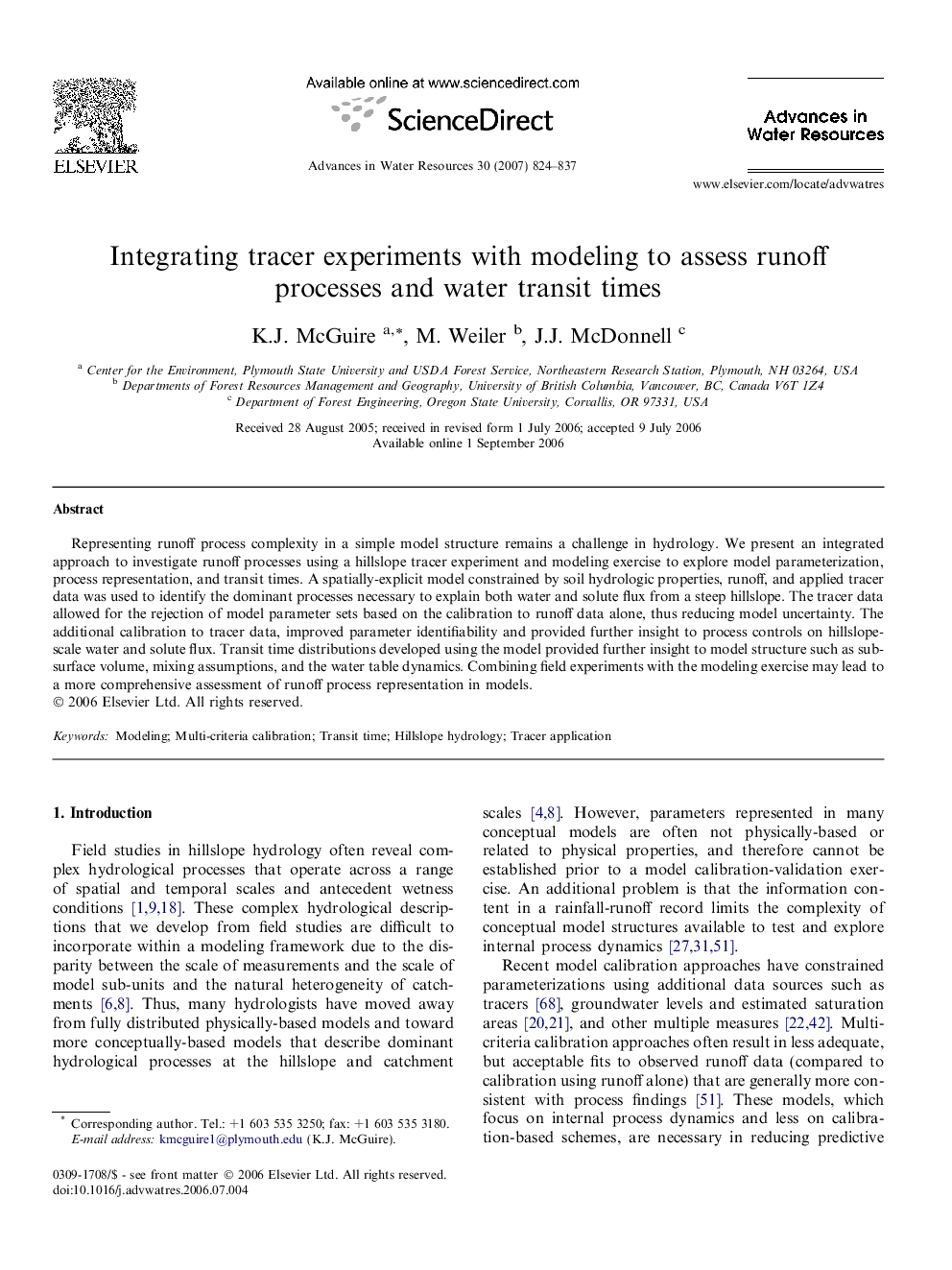| Article ID | Journal | Published Year | Pages | File Type |
|---|---|---|---|---|
| 4526785 | Advances in Water Resources | 2007 | 14 Pages |
Representing runoff process complexity in a simple model structure remains a challenge in hydrology. We present an integrated approach to investigate runoff processes using a hillslope tracer experiment and modeling exercise to explore model parameterization, process representation, and transit times. A spatially-explicit model constrained by soil hydrologic properties, runoff, and applied tracer data was used to identify the dominant processes necessary to explain both water and solute flux from a steep hillslope. The tracer data allowed for the rejection of model parameter sets based on the calibration to runoff data alone, thus reducing model uncertainty. The additional calibration to tracer data, improved parameter identifiability and provided further insight to process controls on hillslope-scale water and solute flux. Transit time distributions developed using the model provided further insight to model structure such as subsurface volume, mixing assumptions, and the water table dynamics. Combining field experiments with the modeling exercise may lead to a more comprehensive assessment of runoff process representation in models.
